PAINTING WITHOUT SIGHT
Painting without Sight is an additional film about Terry, which focuses only on his painting process and depicts all the different stages in great detail. Although The Terry Fragments film portrays different facets of Terry’s everyday life, painting remains a major activity in his life. After becoming blind, Terry has developed a unique painting process and style, which allows him to execute all stages by himself, apart from mixing the colours. He uses plasticine to create the outlines and textures, which he then paints and varnishes. One painting may take him several weeks, months or even years, depending on how motivated and inspired he is.
In this film extract from Painting without Sight, Terry summarises the painting process:
The below painting, The Spirit of the Moonbather, was specifically commissioned for the filming process. It features to varying degrees in both films, although we see its completion only in Painting without Sight. The painting contains some of Terry’s favourite motifs, such as the full moon and the back of a nude, lying woman. Originally conceived in multiple colours, Terry eventually decided to make it duo-chromatic (Prussian blue and silver), similar to his painting Moon’s Tune (on the wall behind him).
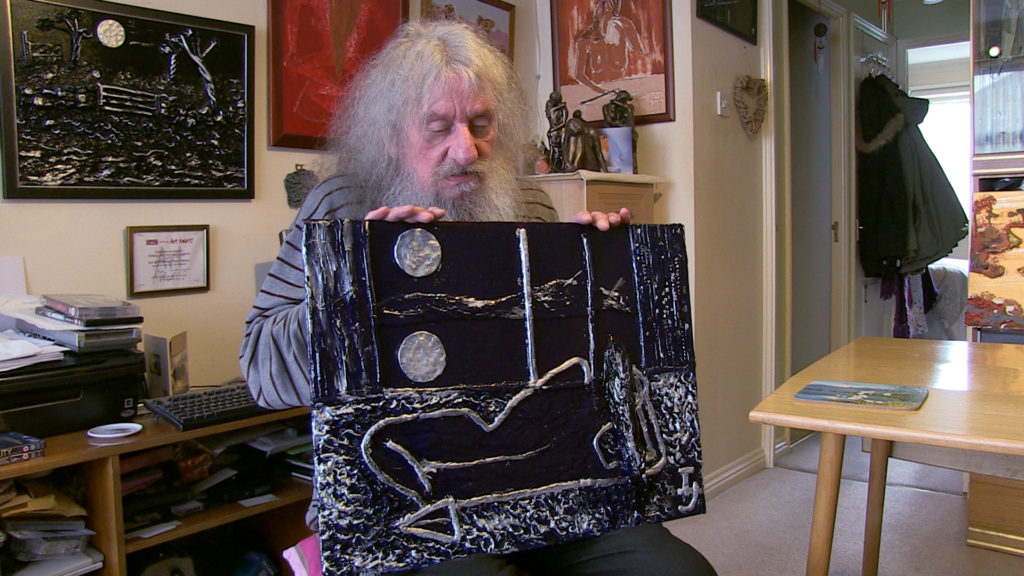
Below is a summary of the main stages of creating this painting as they occur in the second film:
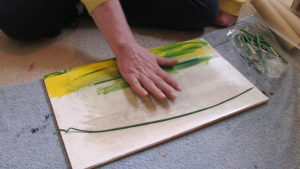 |
| Rolling out plasticine is laborious, but necessary as the thin lines represent those of a pencil. The colour does not matter, as it will be painted over. |
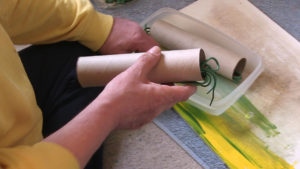 |
| The plasticine is stored in kitchen paper rolls (Terry’s own ‘patent’) in Tupperware boxes of various sizes and the lids are marked with Braille to indicate the contents. |
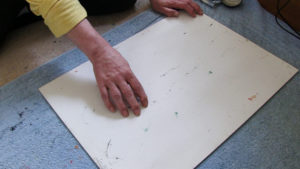 |
| The composition requires immense time and thought, imagination and inspiration are provided by memory and music or both. |
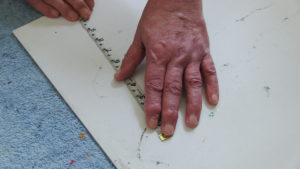 |
| Using a tactile tape measure (feet and inches), Terry plans the spatial aspects of particular elements (usually the horizontals and verticals) from the edges of the canvas board. |
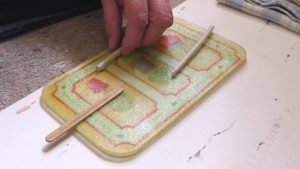 |
| Terry’s signature is formed by four pieces of plasticine, which are flattened by using an ice lolly stick and the relevant lengths are cut by an ordinary knife. |
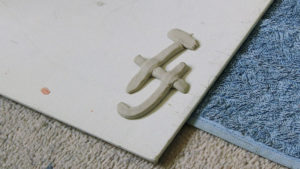 |
| The signature is usually the first complete element to appear on the canvas board in one of the lower corners. |
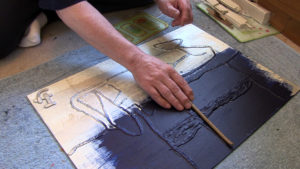 |
| The outline of the painting is “drawn” with lines of plasticine, pressing these into the board, sometimes painting over them for security. The range of hills in the background roughly echo the shape of the woman’s figure. |
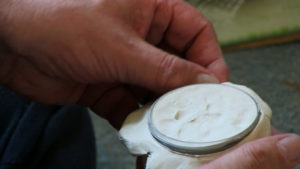 |
| The moon, always a full moon, is formed by using a suitable round object, such as a lid from a coffee jar or the mouth of a circular pot. See another example here. |
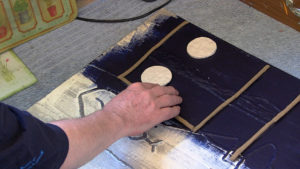 |
| The moon, its reflection and the window frames are completed, though given more room, the moon’s reflection could have been rendered in “ irregular slices” giving the effect of wave movement, like here. |
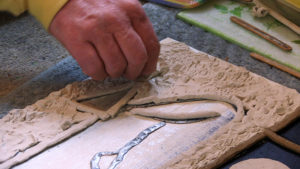 |
| After “laying the carpet”, Terry pinches the plasticine, bit by bit, between finger and thumb, so as to raise the pile of the carpet into a more textual feel. |
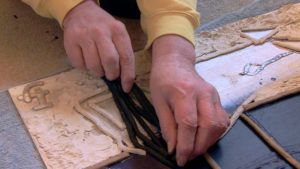 |
| The hair of the lying woman is formed by using the index finger to shift and drag the plasticine into realistic waves of hair. |
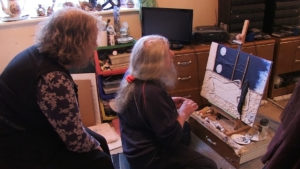 |
| Pam gives her feedback about the painting so far. Areas that have been missed or misshaped forms are identified. |
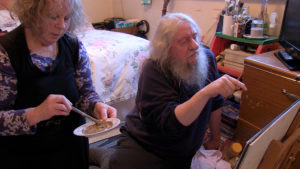 |
| Pam mixes some of the colours, under Terry’s specific instruction or as far as memory allows. They often refer to specific objects (e.g. strawberry ice cream) or other paintings to pinpoint the colour he aims for. |
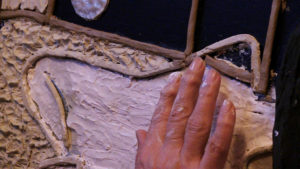 |
| Terry uses mainly his index finger to apply acrylic paint to the more intricate and detailed texture, but for larger areas of canvas board and texture, he uses a wide brush. |
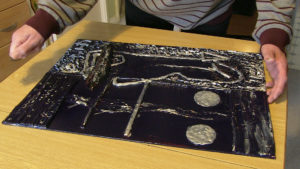 |
| This is a very private and almost “sterile” process and Terry is alone at night when it is quiet and no-one else is present, therefore negating any unnecessary movement of air and any foreign bodies that mar the varnished surface of the painting. For this particular painting, Terry has changed his mind about the colours at the last minute, deciding instead to only use Prussian blue and silver. |
| In this film extract, Terry presents the finished painting, The Spirit of the Moonbather, and explains the process and inspiration behind it. The women’s body is semi-transparent, thus evoking the “spirit” aspect. |
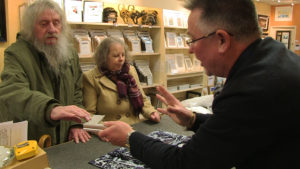 |
| Terry and Pam go to the local picture framer to choose a suitable frame. |
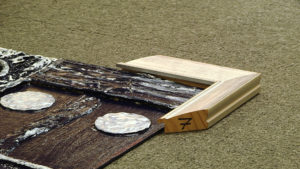 |
| Based upon the size, colour and cost, in consultation with the picture framer, a suitable frame is purchased. The frame’s silver colour and linear edges harmonise with the painting. |
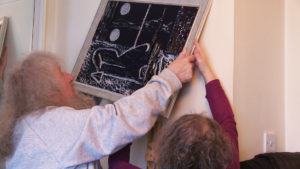 |
| Terry and Pam hang the painting on the bedroom wall. Two hooks are necessary to keep the heavy painting straight. |
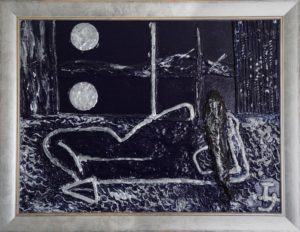 |
| The finished painting: The Spirit of the Moonbather (2012 – 2016) by Terry Hopwood-Jackson |
Terry explains his painting technique in his own words on his website:
http://myweb.tiscali.co.uk/theartsight/page2.html
Terry’s website also contains a gallery with his paintings:
